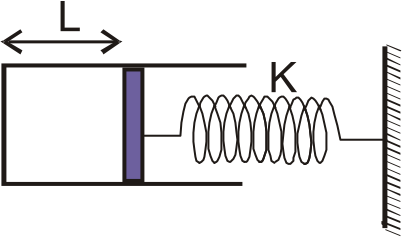(a) Tabulate the differences in the characteristics of states of matter.
(b) Comment upon the following: rigidity. Compressibility. Fluidity. Filling a gas container, shape, kinetic energy and density.
Step by step video & image solution for (a) Tabulate the differences in the characteristics of states of matter. (b) Comment upon the following: rigidity. Compressibility. Fluidity. Filling a gas container, shape, kinetic energy and density. by Chemistry experts to help you in doubts & scoring excellent marks in Class 9 exams.
Topper's Solved these Questions
- BOOK - DINESH PUBLICATIONCHAPTER - MATTER IN OUR SURROUNDINGS EXERCISE - N.C.E.R.T. END EXERCISE9videos
MATTER IN OUR SURROUNDINGS
- BOOK - DINESH PUBLICATIONCHAPTER - MATTER IN OUR SURROUNDINGS EXERCISE - Very Short Answer Questions46videos
MATTER IN OUR SURROUNDINGS
- BOOK - DINESH PUBLICATIONCHAPTER - MATTER IN OUR SURROUNDINGS EXERCISE - (LAQs) Long Answer Questions5videos
MATTER IN OUR SURROUNDINGS
- BOOK - DINESH PUBLICATIONCHAPTER - IS MATTER AROUND US PUREEXERCISE - LAQs10videos
IS MATTER AROUND US PURE
- BOOK - DINESH PUBLICATIONCHAPTER - STRUCTURE OF ATOM EXERCISE - Long Answer Questions6videos
STRUCTURE OF ATOM
Similar Questions
(a) Tabulate the differences in the characteristics of states of matter.
(b) Comment upon the following: rigidity. Compressibility. Fluidity. Filling a gas container, shape, kinetic energy and density.View SolutionTabulate the differences in the states of matter on the basis of the following characteristics :
(i) Rigidity (ii) Kinetic energy (iii) Density.View Solution
Knowledge Check
- Question 1 - Select One
Matter around us can exist in three different states , namely , solids , liquid and gas . The correct order of their compressibility is
ALiquid < Gas < SolidBSolid < Liquid < GasCGas < Liquid < SolidDSolid < Gas < Liquid - Question 2 - Select One
An unknown gas is placed in a sealed container with a fixed volume. Which of the characteristics listed change(s) when the container is heated from 25∘C to 250∘C?
(P) The density of the gas
(Q) The average kinetic energy of the molecules
(R) The mean free path between molecular collisions
(R) The mean free path between molecular collisionsAP onlyBQ onlyCR onlyDP and Q only - Question 3 - Select One
A fixed container is fitted with a piston which is attached to a spring of spring constant k. The other and of the spring is attached to a rigid wall. Initially the spring is in its natural length and the length of container between the piston and its side wall is L. Now an dideal diatomic gas is slowly filled in the container so that the piston moves quasistatically. It pushed the piston by x so that the spring now is compressed by x. The total rotaional kinetic energy of the gas molecules in terms of the displacement x of the piston is (there is vacuum outside the container)
 AkxLB4kxLCkx(x+L)D2kx2L
AkxLB4kxLCkx(x+L)D2kx2L
State if each of the following statements is true or false. Give reasons for your answer.
a) In an elastic collision of two bodies, the momentum and energy of each body is conserved.
b)Total energy of a systm is always conserved,no matter what internal and external forces on the body are present.
Work done in the motion of a body over a closed loop is zero for every force in nature.
d) In an inelastic collision, the final kinetic energy is always less than the initial kinetic energy of the sytem.View SolutionState if each of the following statements is true or false. Give reasons for your answer.
a) In an elastic collision of two bodies, the momentum and energy of each body is conserved.
b)Total energy of a systm is always conserved,no matter what internal and external forces on the body are present.
Work done in the motion of a body over a closed loop is zero for every force in nature.
d) In an inelastic collision, the final kinetic energy is always less than the initial kinetic energy of the sytem.View SolutionIn a photoelectric experiment, a monochromatic light is incident on the metal plate A. It was observed that with V=5volt, the maximum kinetic energy of photoelectrons striking plate B was 1eV. The polarity of the applied potential difference was as shown in figure (a). With polarity of the applied potential difference reversed (as shown in figure (b)) and frequency of incident light doubled, it was observed that in saturation state, the kinetic energy of electrons striking plate B ranged between 5 eV to 20 eV. Find the work function of metal used in plate A.
 View Solution
View SolutionA parallel plate air filled capacitor having area 40cm2 and plate spacing 1.0 mm is charged to a potential difference of 500V. Find (a) the capacitance, (b) the magnitude of the charge on each plate ( c) the stored energy, (d) the electric field between the plates and (e ) the energy density between the plates.
View Solution(a) What is the reason for the existence of the three states of matter ?
(b) What will happen when solid ammonium chloride is heated ?
(c ) The room temperature is 25∘C. What is the corresponding temperature on the Kelvin scale ?
(d) What happens to the particle motion if the temperature of the gas is increased ?
(e ) A substance 'X' was highly compressible and could be easily liquified. It could also take up the shape of any container. Predict the nature of the substance. Enlist four properties of this state of matter.View Solution

